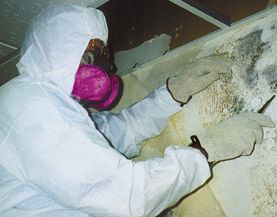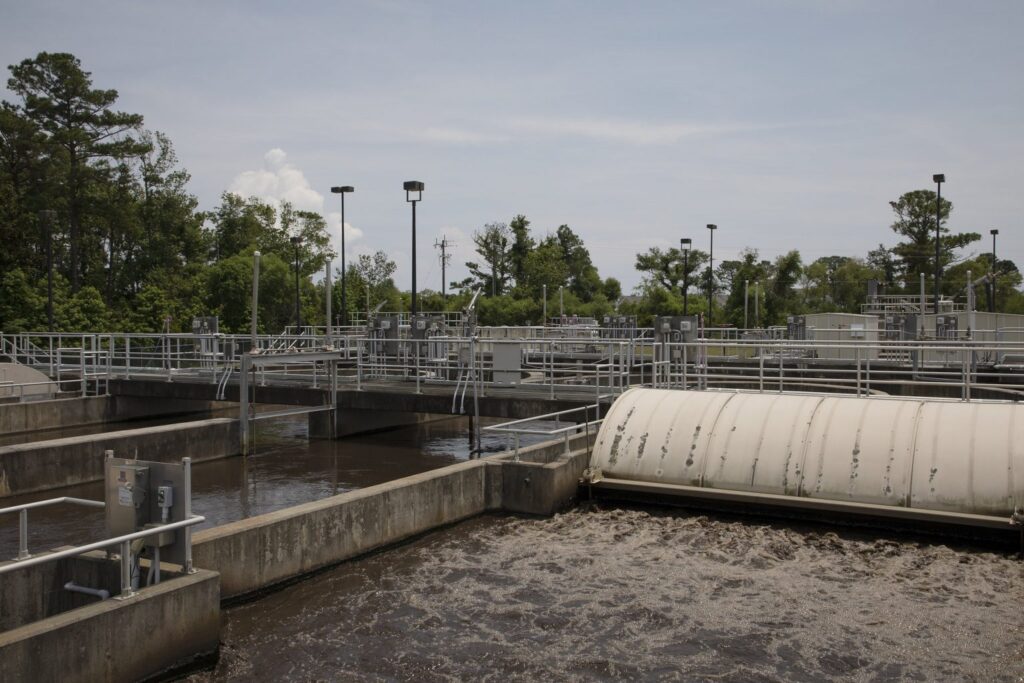Quick guide to mold remediation
There are a lot of disgusting pieces of dirt that can have a negative impact on our houses. We want to avoid this at all costs; our homes are precious to us and we therefore don’t want them to get dirty. Noone wants to sit around in a house with filth littered throughout it, but unfortunately that’s what can happen if you have mold growing in your home. Mold is among the worst looking and smelling fungus’, and it’s also one of the toughest to get rid of. There is probably a lot more to it than you realise, because it’s not as simple as washing it off with soap and water. Try not to worry too much, though, and I’m here to help you today. Here’s a quick guide to mold remediation.
HIRE A COMPANY TO DO IT FOR YOU
Now, as I’ve already mentioned, mold removal can be a lot trickier than you might imagine. If you are experienced with this kind of cleaning, or a least have a very good idea as to how you should deal with it, then feel free to have a crack yourself. However, if you’re less experienced, it might be worth letting a company deal with your mold for you. These companies will know exactly what they’re doing; they’ll have dealt with this kind of thing a hundred times before and will know exactly how to deal with your specific problems. They may even come to your house before you pay them so they can have a talk with you about how they’re going to proceed with getting rid of your mold infestation
There are a few things you should look for in companies who deal with this kind of thing. Above all else, however, they should be good at removing mold- that’s the most important thing. You can find the cheapest price available, but if they don’t actually get rid of your mold properly then what’s the point? That’s why it’s important that you do some good research. Look around to try and find the best company before you actually make a decision- look into their past jobs and some customer reviews to figure out who the best people are to hire.
MAKE SURE YOU DEAL WITH THE PROBLEM QUICKLY
With mold, the key is acting quickly to get rid of it. It can be very tricky to deal with and if you aren’t careful, it’ll spread throughout your home and latch on to a variety of different surfaces- and it might even spread through walls.
That’s why as soon as you get any indication that there is mold growing in your house, you should act. Whether this is by cleaning it yourself or by hiring a company to do it for you, speed is the answer. Don’t let it takeover your home and make sure you get rid of it all.

Remediation
Remediation includes structural repairs to prevent additional water intrusion, removal of mold-contaminated materials that cannot be adequately cleaned and decontaminated, and cleaning and decontamination of mold-contaminated materials that can withstand such treatment.
Remediation of mold refers to the process of removing contamination coupled with steps to modify the indoor environment to prevent the recurrence of growth. In many cases it is necessary for the remediation process to include engineering controls and other protective measures to prevent or minimize potentially harmful exposures to workers and occupants
The objectives of any mold remediation project are:
•Correct the underlying moisture problem
•Effectively and safely remove fungal contaminated material, including the mold contaminants in settled dust
•Control contaminants during remediation
•Repair property damage and prevent future loss to building materials and contents
Remediation plan
Remediation includes both the identification and correction of the conditions that permit mold growth, as well as the steps to safely and effectively remove mold-damaged materials
Determine Extent of Mold Growth
Sometimes it is simple to determine the scope of a mold problem, but often it is not easy or obvious. Leaky roofs or walls, widespread and repeated condensation, or wicking of water through a concrete slab, for example, may lead to extensive hidden mold growth. Once the scope has been determined, a strategy for cleaning and repair may be developed by the homeowner, building manager, or contractor, as appropriate in the specific case.

Mould Remediation Guidelines
The mould remediation guidelines prepared by the Construction Association offers practical advice on mould-related issues (legal, insurance, and health considerations). It also offers helpful information on how to minimize mould growth, identify and measure it, and step-by-step instructions on remediation.
Mould Abatement Guidelines
Environmental Abatement Council prepared this mould remediation guidelines to assist building owners, constructors, contractors, subcontractors and workers who have duties under the Occupational Health and Safety Act and its Regulations to safely perform work activities involving Mould (Microbial) Abatement and remediation.
Mould Control Practice Guide
The issued the Mould Control Practice Guide to assist and educate its members with respect to certain matters related to mould and mould in buildings.
The Indoor Mold Is An Early Warning Device
The mold has been the victim of a bad press. Mention the word and it conjures up an image of something rotting or in the process of decomposition. And yet, were it not for the mold that inspired the discovery of penicillin millions of lives would have been lost.

Mold Frequently Asked Questions (FAQs)
I found mold growing in my home, should I have it tested?
Generally, it is not necessary to identify the species of mold growing in a residence, and the Center for Disease Control (CDC) does not recommend routine sampling for mold. Current evidence indicates that allergies are the type of diseases most often associate with molds. Since the susceptibility of individuals can vary greatly either because the amount or type of mold, sampling and culturing are not reliable in determining your health risk. If you are susceptible to mold and mold is seen or smelled, there is a potential health risk; therefore no matter what type of mold is present, you should arrange for its removal. Furthermore, reliable sampling for mold can be expensive, and standards for judging what is and what is not an acceptable or tolerable quantity of mold have not been established.
I found mold in my home. Can I clean it up myself or should I hire someone?
Who should do the cleanup depends on a number of factors. One consideration is the size of the mold problem. I the moldy area is less than about 10 square feet (approximately 3’ by 3’ square), in most cases, you can handle the job yourself following the guidelines below.
If there has been a lot of water damage, and/or the mold covers more than 10 sq. ft. consult EPA guide Mold Remediation in Schools and Commercial Buildings.
If you choose to hire a contractor or other professional service provider make sure they are licensed Mold Assessor/Abatement contractor (see below for more information).
If you suspect that the heating/ventilation/air conditioning (HVAC) system may be contaminated with mold consult the EPA’s guide Should You Have the Air Ducts in Your Home Cleaned?.
If the water and/or mold damage was caused by sewage or other contaminated water, then call a licensed professional.
If you have health concerns, consult a health professional before starting cleanup.
What can I do to prevent mold growth in my home?
The key to mold control is moisture control. Practice the following tips to reduce moisture and humidity in your home
Address all water leaks of excessive moisture right away – dry water damaged items within 24 to 48 hours. Mold can begin to grow on damp surfaces within that timeframe.
Eliminate water problems or potential problems – repair leaks, remove standing water, insulate cold surfaces to prevent condensation, slope the ground away from the house foundation, ensure air-conditioner drip pans and drain lines are dried, cleaned and drained properly.
Allow adequate air flow – open windows, use exhaust/vent fans when high humidity is present.
Keep humidity levels as low as you can – no higher than 50 to 55% all day long. An air conditioner or dehumidifier will help you to keep the level low.
Use an air conditioner or dehumidifier during humid months.
Add mold inhibitors to paints before application or use paint that contains inhibitors in high moisture areas in the home.
Clean bathrooms with mold killing products.
Do not carpet bathrooms and basements.
Remove or replace previously soaked carpets and upholstery.
I heard about “toxic mold” or “black mold” that grows in homes and other buildings can affect my health. Should I be concerned about exposure to me and my family?
The term “toxic mold” is not accurate. While certain molds are toxigenic, meaning they can produce toxins (specifically mycotoxins), the molds themselves are not toxic, or poisonous. Hazards presented by molds that may produce mycotoxins should be considered the same as other common molds which can grow in your house. There is always a little mold everywhere – in the air and on many surfaces. There are very few reports that toxigenic molds found inside homes can cause unique or rare health conditions such as pulmonary hemorrhage or memory loss. These case reports are rare, and a causal link between the presence of the toxigenic mold and these conditions has not been proven.

Mold Remediation
When it comes to remediating mold it’s always best to hire a professional mold removal and remediation service. However, if the mold in your home is not toxic and the area of mold growth is small (less than 10 square feet, or the equivalent of roughly a 3 by 3 foot patch) then you can perform the mold remediation yourself if you wish.
Mold Remediation Overview
The main steps in mold remediation and abatement are:
Wear protective equipment
Contain mold spores
Set up negative pressure
Remove the mold
Prevent mold returning
Clean belongings
HEPA vacuum
Dispose of the mold
Protective Equipment for Mold Remediation
The mold remediation process is one of the times when mold spores are most likely to be disturbed into the air. This is why you should wear protective clothing and equipment while performing mold remediation.
Protective equipment for mold remediation includes:
Dust filter mask or respirator
Goggles
Gloves
Protective clothing that covers your whole body and can be easily cleaned or disposed of
You should decide how much protective equipment you need to use depending on how severe the mold problem is.
Contain Mold Spores During Remediation
If you need to remove a large amount of mold then you may decide to seal off the room to prevent any mold spores from spreading to the rest of the house. To seal off the room you are about to clean use plastic sheets with duct tape to cover doorways, vents and any other openings.
